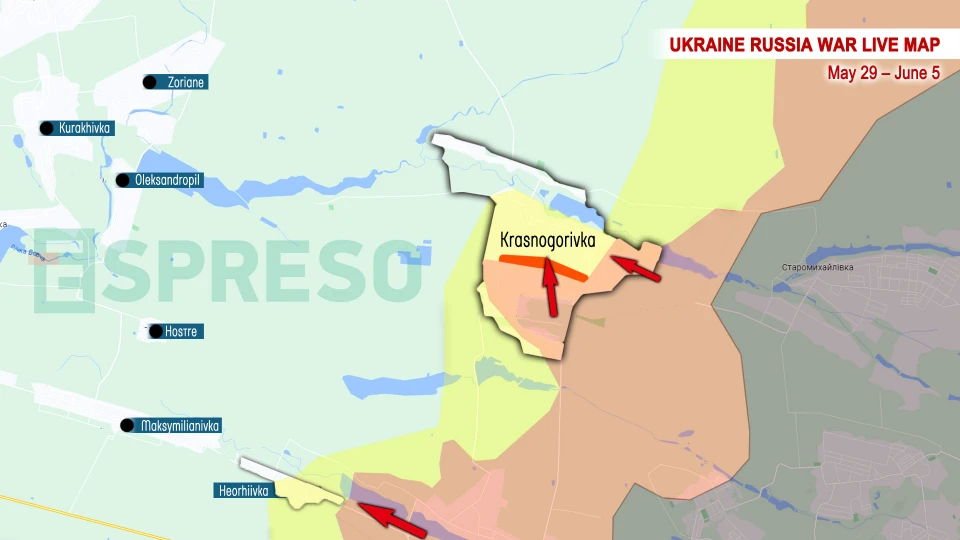
Germany's consistency in bolstering Ukraine's air defense, deja vu after Rheinmetall CEO's statement. Serhiy Zgurets' column
Germany will soon provide Ukraine with Patriot, IRIS-T, Gepard systems, missiles, and ammunition, announced Chancellor Olaf Scholz
Military aid from Germany
In the coming weeks and months, Germany will supply Ukraine with the Patriot air defense system, IRIS-T system, Gepard anti-aircraft systems, missiles and ammunition. This was announced by German Chancellor Olaf Scholz at a conference on Ukraine's recovery in Berlin. First of all, it is important that Ukraine and Germany are consistent in strengthening our air defense, because this will be the third Patriot system that Germany is transferring to Ukraine. The command center includes a radar and eight launchers.
Currently, Germany is training Ukrainian servicemen to master this system, which is capable of shooting down hypersonic Kinzhal ballistic missiles, cruise missiles, and aircraft. Finally, there is currently no ban on using Patriot to shoot down targets in Russian airspace. Patriot systems mainly guard the capital, although they are sometimes used to surprise Russian forces. Our calculations have already shown that this system downed an A-50 long-range radar detection aircraft and a number of Russian aircraft that were in the airspace of the Bryansk region on the same day in 2023, where they were shot down by Patriot.
At this conference in Berlin, the President of Ukraine reiterated that Ukraine needs an additional 7 Patriot batteries, including those promised by Olaf Scholz. Against the backdrop of the Chancellor's important statements on air defense, it is worth mentioning new announcements from a leading German arms manufacturer.
On June 10, Rheinmetall announced that it would set up a facility in Ukraine to repair and eventually manufacture German-made equipment. There is a certain déjà vu here, because last year, the head of this company, Armin Papperger, said that within three months they would build an underground plant in western Ukraine that would produce tanks and armored personnel carriers. But we see that this process is not as fast as previously announced.
We understand that first of all, Marder armored personnel carriers, Gepard anti-aircraft guns, and to some extent Leopard tanks that were supplied to Ukraine will be repaired in Ukraine. The process should include localization and production of certain armored vehicles. First of all, Rheinmetall offers Ukraine Fuchs armored personnel carriers, which are quite good vehicles.
And then there are plans for two more plants. One plant will produce air defense systems and the other will produce 155 mm ammunition. This is an extremely important area, but we do not know the date when the construction of this ammunition plant will begin. However, we know that there are three areas: armored vehicles, artillery ammunition and air defense systems. It is important that these plans with Germany are activated as soon as possible, because these weapons are extremely needed on the battlefield.
About frontline situation
Now let's take a closer look at the Kurakhove direction. Here, fighting continues in Krasnohorivka, near Heorhiivka, Paraskoviivka and Kostiantynivka. On this eastern front, the Russian troops are now storming the south of Krasnohorivka.
Andriy Shyshuk, call sign Sievier, a Ukrainian Armed Forces serviceman, said that Krasnohorivka is a strategic height, and the occupying Russian army has been using tactics to seize heights since 2014. This is how Bakhmut was taken, and in Avdiivka, the Russians really wanted to seize the terricone. So this tactic is likely pre-Soviet, but in certain cases it gives a very good advantage. Accordingly, we need to pay more attention to this. First, we need to fortify these heights. Secondly, if we storm, we should not storm the lowlands, but rather the heights.

The defender added that Russian troops are still using column tactics when storming. That is, a tank is in front, and an infantry fighting vehicle or an MT-LB is behind, almost at a minimum distance. Sometimes there can be two tanks, and the infantry are transported by infantry fighting vehicles. This tank covers them with electronic warfare and chaotic fire. Sometimes the EW is effective, and sometimes not. In addition, a lot depends on FPV drones, which the Russians are constantly looking for countermeasures against, and sometimes find them. Therefore, we should not forget about effective means such as ATGMs and Javelins, as there is a shortage of these weapons. It is crucial to ensure that our forces are well-prepared and that both the front and second defense lines are saturated with these systems. The Stuhna ATGM should be placed every 2-3 kilometers, no further than 2 kilometers from the front line, which would significantly hinder Russian assaults
The serviceman noted that Russia's tactics in the Krasnohorivka sector involve attacking from the southern quarry, where all Russian columns initially came from. Currently, Russia is trying to advance with armored vehicles from Staromykhailivka. Additionally, they are targeting Ukrainian communications, including electricity, water supply, and television and radio communications. Earlier, the Russians destroyed a TV tower in Kharkiv, prompting us to take similar action in Belgorod. In war, if you don't respond symmetrically and appropriately, the enemy will continue to exert greater pressure. If at least one machine gun is not responding to a machine gun in a certain area, the enemy will constantly increase the tension in order to make a breakthrough. That is, all combat actions of Russian forces must be countered.
Shyshuk emphasized that there is still a TV tower in Donetsk that is the second tallest in Ukraine, I think it is 360 meters. It is one of the three TV towers in Donetsk that survived, and you can see it on a clear day even without binoculars. This TV tower is actually of a very shaky construction, held up only by cables. Accordingly, the Russians broadcast their radio and television to the Ukrainian rear for over 100 kilometers. And from here come both evaders and some spies or adjusters detained by the SBU. In the information field in these areas, we are already losing the war. However, the Russians not only broadcast, but also jam Ukrainian radio stations with its propaganda stations. I would really like to see somebody pay attention to this.
The serviceman noted that remote mining can be achieved with artificial means and at shorter distances, unlike the Russians, who use Uragan and Tornado MLRS for this purpose. Remote mining could effectively halt Russian assaults. If Ukraine had the means for such mining, the occupiers' columns would be halted in more places. However, we cannot rely solely on FPV drones. Moreover, Russian drones are constantly hovering overhead. If it is difficult for us to shoot down Orlans or Zalas, we must learn to manufacture them in the third year of a full-scale war. Ukrainian aerial reconnaissance assets operate at lower altitudes, are more vulnerable, and are few in number due to their higher cost. This is an important issue that needs attention.
I would like to thank Andriy for his clear emphasis. I think that the Ukrainian defense industry will take note regarding remote mining equipment, increasing the number of ATGMs and the development of unmanned systems that can compete with Orlans and Zalas.
- News












































